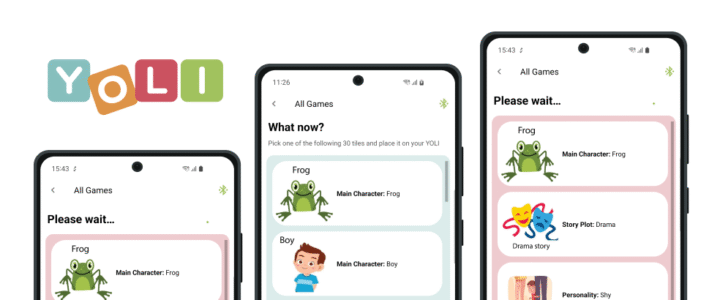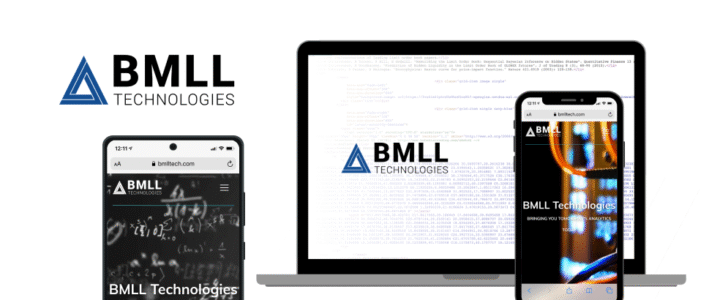AI Visibility/GEO – Redefining brand visibility for AI search
The days of relying on ten blue links at the top of search results is over. Brand discovery now happens in the black box of AI assistants, and Rankfor.ai was founded to map this new territory. The team needed to prove their concept quickly while meeting enterprise-grade standards. DO OK partnered to design and deliver a proof of concept that combined digital footprint scans and persona simulations with actionable dashboard insights. The system gave Rankfor.ai a credible platform for fundraising and early customer conversations while laying a modular foundation for scale-up, delivered under tight timelines.
About Rankfor.ai
Rankfor.ai is an early-stage technology company pioneering the concept of AI Visibility/GEO (Generative Engine Optimization), a new approach to understanding how brands appear and are narrated across AI-powered interfaces. As large language models and generative AI systems reshape the way people engage with companies, traditional tools like SEO or SERP monitoring are no longer enough. Visibility now depends on how AI assistants summarise a brand and whether narratives align with audience expectations. Source citation is also an emerging factor in trust-building.
Rankfor.ai’s mission is to provide enterprises with actionable insights in this space. Their platform is designed to scan a brand’s digital footprint and map it against personas, then simulate prompts across multiple AI models to reveal trust gaps, coverage blind spots, misaligned narratives and new opportunities. These insights are translated into prescriptive dashboards and playbooks, helping marketing, communications and product teams strengthen brand voice and align digital presence with strategic goals.
At the time of engagement, Rankfor.ai was in the process of defining and validating an entirely new category. They needed to prove their approach could work technically and resonate with customers and investors. Because no off-the-shelf solutions existed and the problem space was evolving quickly, the company sought an engineering partner who could co-create a robust proof of concept to balance exploratory R&D with the structure, security, scalability and governance required for enterprise adoption.
Overview
Languages
TypeScript (core)
Python (ML)
Frameworks
NestJS 11
React
Ant Design + Tailwind for UI
Team size
2 Engineers
+ Ad-hoc design & content support
Project size
ongoing
Client Needs
Rankfor.ai entered the market with an ambitious vision to create a new category that would redefine how enterprises measure visibility in the age of AI. Conventional SEO or analytics platforms focus narrowly on search engine rankings, but Rankfor.ai’s concept of AI Visibility/GEO sought to answer broader questions. How is a brand represented across AI assistants, generative search engines and recommendation systems? What level of trust do these models assign to a brand? Where are the gaps in coverage and where do competing narratives emerge? There were no existing tools capable of answering these questions.
To tackle this, Rankfor.ai needed a proof of concept that could combine advanced R&D with strict production discipline. At its core, the solution had to scan and structure a brand’s digital footprint across content surfaces, then cluster the results into meaningful ontologies. From these clusters, the system needed to generate personas and test how those personas would interact with different AI models. Simulating prompts across providers like Google Gemini and OpenAI GPT would expose areas of strength or invisibility along with narrative drift.
The results had to be presented in a format that was actionable. Rankfor.ai envisioned a dashboard and playbook that teams could use to prioritise actions, refine messaging, improve digital trust and monitor progress over time.
The challenge was compounded by the environment. LLM APIs changed frequently and new AI surfaces appeared almost monthly. Best practices for evaluation were still emerging. Rankfor.ai needed a partner who could deliver under these conditions, balancing speed and innovation with architecture, security and transparency. They required a team to co-create a working system that would form the foundation of an entirely new product category.
Why DO OK
When Rankfor.ai began searching for a development partner, they needed more than a vendor to write code. The project required a team that could combine engineering execution with product R&D and architectural foresight, all under tight timelines. They wanted a partner willing to engage in co-creation.
Rankfor.ai had already developed the proprietary strategic framework for AI Visibility; they needed an engineering partner that could translate our novel concepts, like ontological clustering and persona-based prompt simulation, into secure, scalable, enterprise-ready code. DO OK’s systems-thinking approach was the right fit.
DO OK distinguished itself early in the process by proposing a discovery-to-delivery pathway anchored in a clear, repeatable flow: scan URLs, cluster digital territories, generate personas, then produce reports and metrics. That structure offered Rankfor.ai two main advantages: first, it created a logical backbone for the proof of concept, so that the system could evolve without collapsing under the weight of rapid experimentation. Second, it demonstrated DO OK’s ability to think in systems instead of isolated features, which helped reassure the client that today’s PoC could become tomorrow’s enterprise product.
During pre-delivery conversations, our team refined estimates, stress-tested assumptions and mapped dependencies to highlight potential risks. We emphasised strict versioned APIs, centralised prompt governance and modular design as mechanisms to reduce drift and enable faster iteration. Rankfor.ai’s founders were concerned about LLM volatility and investor credibility; these inbuilt mechanisms helped allay those fears.
What ultimately convinced Rankfor.ai was the blend of technical depth, consultative problem-solving and enterprise-minded thinking that DO OK brought to the table. The relationship grew as a partnership built on transparency and shared commitment to pioneering a new category.
Project Description
Once the scope and delivery pathway were agreed, the engagement moved quickly into execution. We set a roadmap with Rankfor.ai that focused on one outcome: a credible proof of concept that could withstand investor scrutiny while leaving space for a version-one release.
The first stream centred on backend R&D. We built a versioned Scan Controller and pipeline capable of analysing domains and extracting ontology clusters. These clusters became the backbone of later steps, providing a structured way to interpret a brand’s digital footprint.
The second stream focused on persona generation. We created an orchestrated service that regenerates personas atomically and recalculates coverage while protecting curated demo personas from being overwritten.
To manage the volatility of large language models, we introduced prompt governance and observability. Centralised templates, QA checklists and output schemas kept results stable across changing APIs. Correlation IDs and refresh metrics added transparency into model behavior over time.
Finally, we turned insights into a narrative dashboard. Built in React with Ant Design and Tailwind, the interface presented an AI Territory Map, persona coverage and progress indicators like Semantic Match Rate. A supporting website with blog functionality helped communicate the emerging AI Visibility/GEO category externally.
Challenges and Solutions
Building a proof of concept in a volatile AI landscape meant facing challenges on several fronts. The most immediate was the instability of LLM surfaces. Endpoints, models and behaviours changed frequently, making consistent results difficult to achieve. To address this, DO OK implemented a proxy layer and centralised prompt governance reinforced by QA rubrics. This gave Rankfor.ai a buffer against upstream volatility and allowed outputs to remain stable across runs.
Another challenge was data integrity and idempotency. Persona regeneration involved multiple steps, including clustering, prompt execution and coverage recalculation, which could produce duplicate or stale states. We solved this by designing regeneration to be atomic and cache-aware, creating outputs that maintained accuracy while curated demo personas stayed intact.
Maintaining architecture discipline was an important consideration. The risk of circular dependencies and orphaned modules was high in a rapidly evolving NestJS codebase. We enforced strict module boundaries, applied dependency checks and allowed exceptions only where absolutely necessary, preserving maintainability without slowing iteration.
Security and privacy were non-negotiable requirements. We implemented OAuth2/OIDC with JWT verification, Redis-backed sessions, rate limits and token redaction, alongside a “no raw content in logs” rule. The PoC could now be confidently demonstrated to investors and early customers.
Impact and Outcomes
A working proof of concept that validated the vision
The collaboration with DO OK delivered a complete end-to-end proof of concept that transformed Rankfor.ai’s vision into a demonstrable product. The system combined backend R&D, persona-aware simulations and a prescriptive dashboard into a coherent flow. The results allowed Rankfor.ai to showcase their category-defining approach in a usable tool.
Investor confidence through measurable metrics
The PoC quickly proved its strategic value and was instrumental in securing our pre-seed round, with the platform withstanding rigorous technical and business due diligence from the VC investor. The prototype demonstrated that AI Visibility/GEO was feasible and actionable, capable of providing measurable, category-defining metrics like Semantic Match Rate, Ontology Coverage Score and Prompt Impression Rate through its actionable dashboard.
Scalable foundation for version one and enterprise pilots
The modular design and governance mechanisms created a clear operational path to v1. Versioned APIs and centralised prompts with enterprise-class observability features mean that Rankfor.ai can continue to adapt as new AI models and surfaces emerge, along with evolving standards for the technology. The modular architecture, featuring versioned APIs and centralized prompt governance, gives us a direct and efficient path to our first enterprise pilots, de-risking our 12-month timeline to market.
Establishing Rankfor.ai as a first mover in AI visibility
The outcome pioneered an entirely new product class and strengthened Rankfor.ai’s market positioning. The dashboard and supporting website allowed the company to articulate its category narrative more effectively, sparking early customer conversations and building credibility as a first mover in AI Visibility/GEO.
Specialized Technologies
AI/ML
Google Gemini 2.5
OpenAI GPT
Data & Caching
Redis
Auth & Security
OAuth2/OIDC
Charts & Docs
Plotly
Puppeteer
Nodemailer
CI/CD
Docker
GitHub Workflows
“We are creating an entirely new category, which requires both a radical vision and flawless technical execution. We brought the vision for AI Visibility. DO OK delivered the enterprise-grade engineering that made it tangible and investable. They didn’t just build a PoC; they helped us lay the first foundational blocks of a new market.”
Stakeholder at Rankfor.ai

